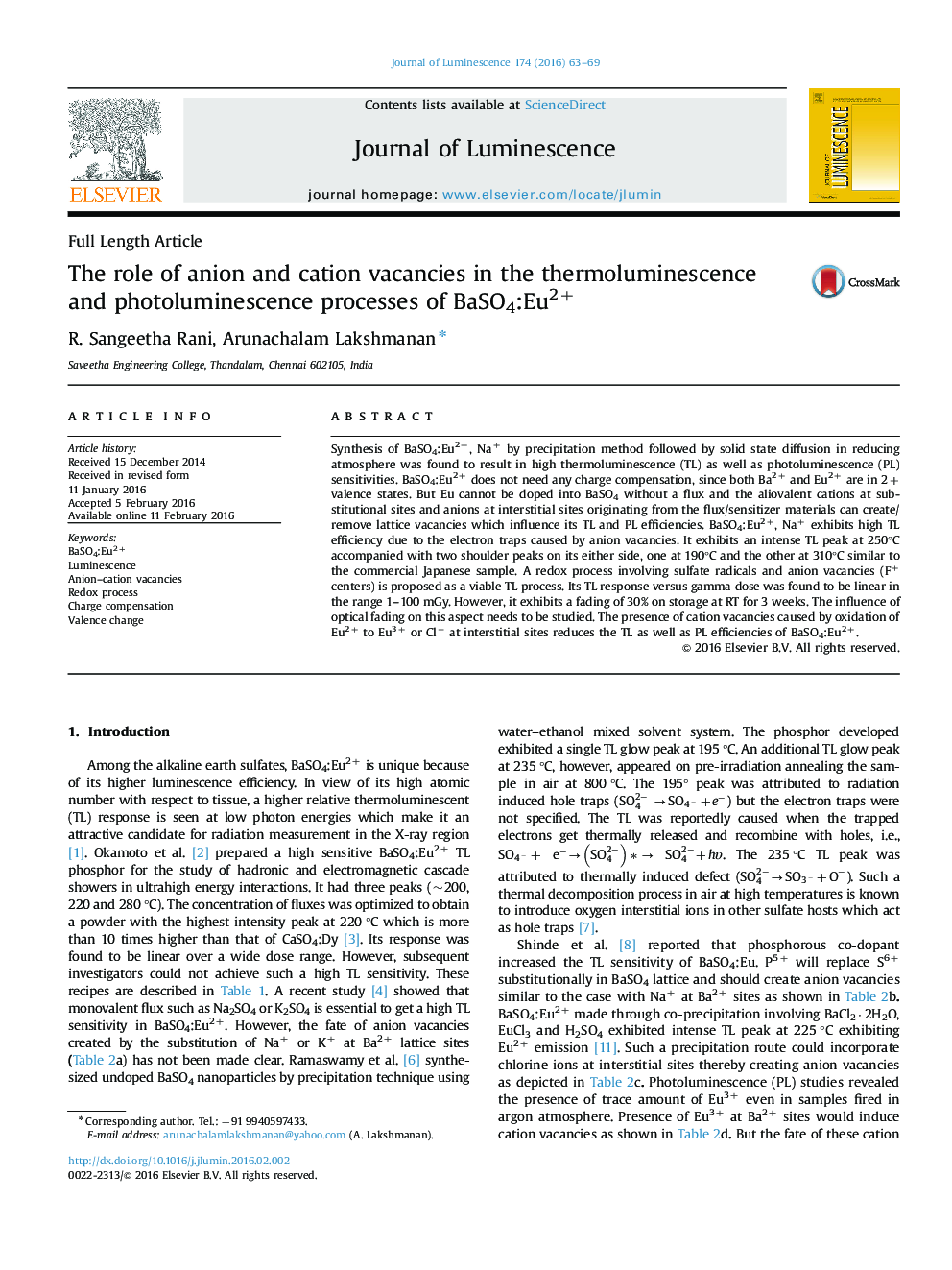| Article ID | Journal | Published Year | Pages | File Type |
|---|---|---|---|---|
| 5398488 | Journal of Luminescence | 2016 | 7 Pages |
Abstract
Synthesis of BaSO4:Eu2+, Na+ by precipitation method followed by solid state diffusion in reducing atmosphere was found to result in high thermoluminescence (TL) as well as photoluminescence (PL) sensitivities. BaSO4:Eu2+ does not need any charge compensation, since both Ba2+ and Eu2+ are in 2+ valence states. But Eu cannot be doped into BaSO4 without a flux and the aliovalent cations at substitutional sites and anions at interstitial sites originating from the flux/sensitizer materials can create/remove lattice vacancies which influence its TL and PL efficiencies. BaSO4:Eu2+, Na+ exhibits high TL efficiency due to the electron traps caused by anion vacancies. It exhibits an intense TL peak at 250°C accompanied with two shoulder peaks on its either side, one at 190°C and the other at 310°C similar to the commercial Japanese sample. A redox process involving sulfate radicals and anion vacancies (F+ centers) is proposed as a viable TL process. Its TL response versus gamma dose was found to be linear in the range 1-100 mGy. However, it exhibits a fading of 30% on storage at RT for 3 weeks. The influence of optical fading on this aspect needs to be studied. The presence of cation vacancies caused by oxidation of Eu2+ to Eu3+ or Clâ at interstitial sites reduces the TL as well as PL efficiencies of BaSO4:Eu2+.
Related Topics
Physical Sciences and Engineering
Chemistry
Physical and Theoretical Chemistry
Authors
R. Sangeetha Rani, Arunachalam Lakshmanan,
